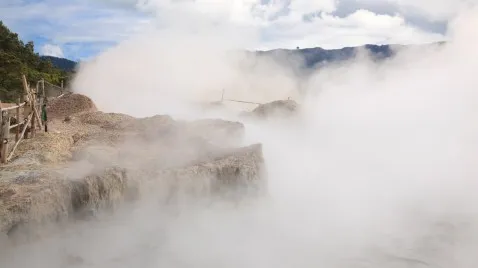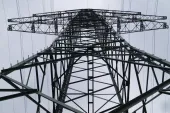
Singapore digs deep to unleash geothermal energy potential
But the volumetric extent of hot rock where geothermal can be sourced is unknown.
Unlike Indonesia, the Philippines, and Japan, Singapore has no known shallow heat source. That is why the country exerted more efforts to unearth its geothermal potential to diversify its energy sources. It turned out that its geothermal potential could cover a sizable portion of Singapore’s energy mix, an expert said.
The Energy Market Authority (EMA) in April issued a request for information to conduct a geophysical investigation project to assess the country’s geothermal energy potential. The EMA said that progress in technologies such as the Advanced Geothermal Systems enabled the extraction of heat from hot dry rock and at greater depths, opening the potential for geothermal applications locally as the country is within a region of high subsurface heat flow.
“If found to have substantial geothermal resource potential, Singapore could consider the technology options available to deploy geothermal energy locally,” it said.
“Singapore has several hot springs and estimated anomalous heat flow. The higher-than-average heat flow could potentially heat up the granite rock underlying Singapore,” said Alessandro Romagnoli, associate professor from the School of Mechanical and Aerospace Engineering at the Nanyang Technological University (NTU) told Asian Power.
In Singapore, the volumetric extent of the hot rock is unknown, Romagnoli said, adding that it is also possible that the actual potential may be less than expected.
According to a report by the International Renewable Energy Agency (IRENA), geothermal resources are thermal energy that is stored as heat in the rocks of the Earth’s crust and interior. Areas with high-temperature water or steam at or near the surface were often called “active” geothermal areas. Water or steam from fissures to deeper depths in areas saturated with water may be tapped for electricity generation “at relatively low cost.”
If an area lack such, geothermal energy can still be accessed through drilling to a deeper depth and injecting water through wells to utilise the heat in dry rocks, IRENA said.
READ MORE: Asia to lead global geothermal capacity growth
Ongoing study
Romagnoli is leading a study by NTU on Singapore’s geothermal energy potential in partnership with TUM Create and Surbana Jurong Group.
The study, which started in October 2021 and is expected to conclude by October 2023, focuses on the northern and eastern regions like the Sembawang hot spring park that have higher surface temperatures and are deemed to have potential.
Romagnoli said that the Sembawang Hot Spring is within the Simpang Granite pluton bedrock, citing the latest geological map of Singapore by the Building and Construction Authority. According to a 2019 study by Gillespie et al., the Simpang Granite pluton has a “high concentration of naturally occurring heat-generating elements.”
“Our ongoing study seeks to measure the rocks' elemental concentration and the temperature of the granites from our deep boreholes. We can better estimate the geothermal energy potential in Singapore when the volume of the hot granite is better constrained,” Romagnoli said.
He said that they have collected data like borehole logs, shallow borehole temperature data, and heat-producing element concentrations in the country’s granite at shallow depths. They have also updated the geological map of Singapore.
The data is used in developing their in-house geological model and near-surface temperature distribution map which helps them in identifying sites for deep exploratory drillings.
“Data from the deep boreholes will be used to verify and constrain our computer model, an essential tool to help us in resource estimation and further development plans,” Romagnoli said. “Our current upcoming activities are the boreholes deep drilling and temperature measurement.”
NTU said in a statement that another study on geothermal supported by the National Research Foundation includes the testing of a quantum gravity sensor to look at the composition and structure of selected geographical sites in Singapore. This can help weigh the applicability of potential sites for geothermal power generation.
Low-carbon alternative
As part of its sustainability initiatives, Singapore’s energy sector is moving towards the “four switches” to achieve net-zero emissions by 2050, according to the Energy 2050 Committee Report released by the EMA. Geothermal energy is amongst those considered.
The first switch to adopt is the use of natural gas for power generation, but gas turbine manufacturers can make more energy-efficient models of natural gas-fired power plants. Carbon capture utilisation and storage technology may also be used to remove the carbon footprint.
Solar power, the most viable renewable energy source in Singapore, is the second switch to the energy transition, whilst regional power grids and electricity imports are the third switches. Whilst longer-term low-carbon alternatives are still being developed, the third switch can help ensure energy security.
Low-carbon alternatives which include geothermal energy, are included in the fourth switch and are needed to decarbonise Singapore’s power sector in the longer term. The report said that hydrogen is a “promising candidate.”
Conventional hydrothermal systems are not applicable to Singapore due to their dry rock conditions, but next-generation geothermal systems that use fracking or closed-loop system methods are “potentially deployable in Singapore’s environment.” Nuclear power is still being developed and tested in other countries.
Sharad Somani, head of Infrastructure at KPMG Asia Pacific, said it may be too early to tell which of the options will be the most viable, but the Lion City benefits “from its geographical position of being at the nexus of regional connectivity of logistics, pipelines, and power grid infrastructure.”
“It has the potential to be a regional energy hub at the centre of an integrated power grid. Separately, the potential of Singapore championing and trailing the use of green hydrogen to replace natural gas is another attractive option,” Somani said.
Aside from these, Somani added that some policy levers are needed, and one that Singapore has undertaken is the carbon tax. Coupled with carbon exchange for trading credits, this will also help companies to plan a decarbonisation map better.
“There is also a need to encourage companies to embrace decarbonisation alternatives and work with the government to focus on new technology solutions. Furthermore, Singapore can act as a test bed for technologies and promote pilot projects in energy storage, energy efficiency and distributed generation to evolve a holistic pathway to net-zero,” he said.
Challenges to geothermal potential
Romagnoli said that the extraction of geothermal energy is constrained by several factors such as how fast the heat energy from the hot rock can be extracted, how long the rock can remain hot enough, and how deep the hot rock resides.
“Highly fractured rocks tend to allow for faster heat extraction. However, if we extract the heat too quickly, the rock may cool faster than expected, thereby risking the lifespan of the resource,” he said.
Drilling and fracturing of rocks at great depth may be needed to access heat energy from deep hot dry rocks, but these processes remain “technically challenging” and “expensive,” he said.
New heat extraction systems, however, that do not require the fracturing of the rock make it more feasible for geothermal heat extraction in Lion City, he said.
Singapore’s limited exposure to geothermal energy development in the past several years also poses a challenge, but the recent move requesting information on geothermal energy exploration indicates an accelerated effort to tap into the energy source, Romagnoli said.
IRENA said that generally, there are challenges in developing a geothermal project when it comes to the assessment of the resource and how the reservoir will react once production starts. Amongst others, it said subsurface resource assessments and reservoir mapping are expensive to hold.
Test wells need to be done to allow developers to build models of the reservoir’s extent and flow and how it will react when water and steam are extracted for power generation. Despite much, much will remain unknown about the performance of the reservoir and how to manage it best during its operational life, before operational experience is gained, the agency said.
Aside from the increasing development costs, geothermal projects also have very different risk profiles compared to other renewable technologies in terms of development and operation. Their development also depends on the availability of comprehensive geothermal resource mapping, according to IRENA.
In developing unconventional geothermal resources, the use of enhanced geothermal or hot dry rock approach is less mature, adding that some projects cost significantly higher due to the deep drilling required, making the economics of such projects much less attractive, it said.
It said that research and development into “more innovative, low-cost drilling techniques and advanced reservoir stimulation methodologies are needed to help lower development costs to make them more “economically viable.”
Shruti Raghuram, junior analyst at Rystad Energy, added development of the geothermal resource will rely heavily on subsurface conditions such as “permeability, porosity, availability of shallow reservoirs and reservoir temperatures.”
Technologies
To address these concerns, Ram said Enhanced Geothermal Systems (EGS) and Advanced Geothermal Systems (AGS) could be the key to unlocking the energy source in Singapore.
He said that there are a few EGS and AGS start-ups globally that have drilled almost 50 wells, with around 37 wells in the pipeline in the coming years. They use innovations that target to mitigate the challenges in conventional systems to enable scalable resources globally.
Raghuram cited some techniques these start-ups employ such as EavorLoop which is a technology Eavor Technologies said is an ideal match for countries like Singapore. Other technologies include Deep Earth Energy Production’s horizontal drilling, CeraPhi’s CeraPhiWell which aims to repurpose hydrocarbon wells to geothermal, and Sage Geosystem’s hybrid AGS-EGS technology.
“In a population-dense country like Singapore, geothermal has the potential to provide reliable baseload electricity if these technologies are leveraged appropriately. However, until more information on the subsurface conditions is revealed, the right mix of traditional and non-traditional geothermal systems cannot be determined,” he said.
“Geothermal as an energy source has been largely untapped in the past, but the significant traction it has gained in recent years could point to a larger adoption rate in the future – a step that is vital to achieve the 2050 net-zero emissions goals,” he added.



















 Advertise
Advertise






